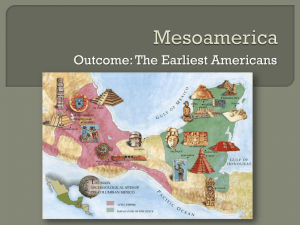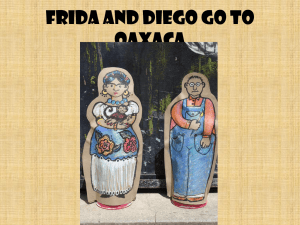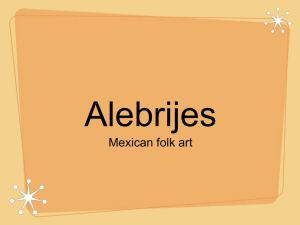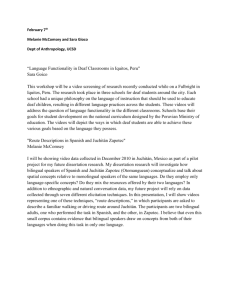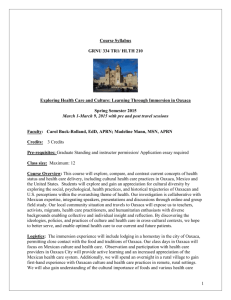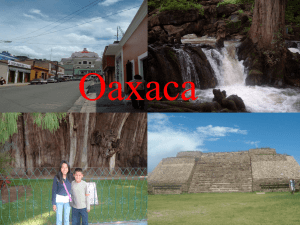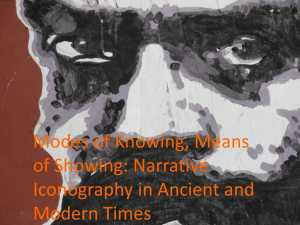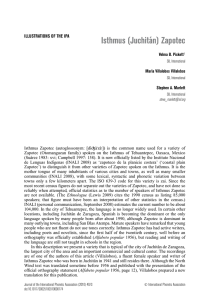Haley Baer Holt Stone Center Tinker Grant Terminal Report
advertisement
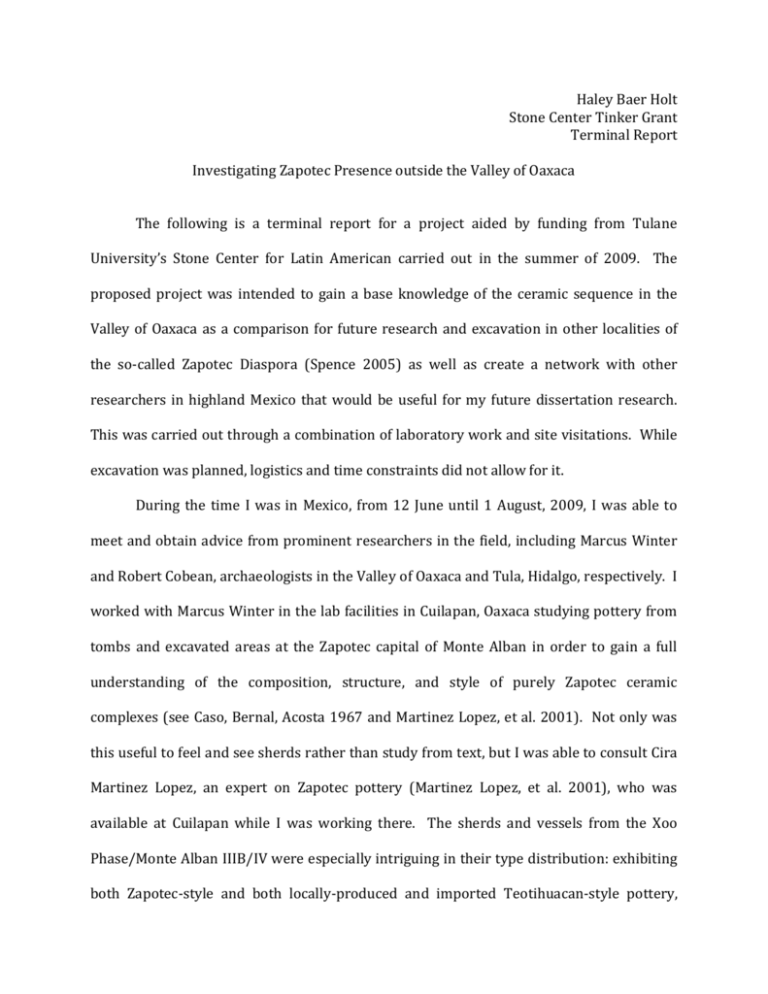
Haley Baer Holt Stone Center Tinker Grant Terminal Report Investigating Zapotec Presence outside the Valley of Oaxaca The following is a terminal report for a project aided by funding from Tulane University’s Stone Center for Latin American carried out in the summer of 2009. The proposed project was intended to gain a base knowledge of the ceramic sequence in the Valley of Oaxaca as a comparison for future research and excavation in other localities of the so-called Zapotec Diaspora (Spence 2005) as well as create a network with other researchers in highland Mexico that would be useful for my future dissertation research. This was carried out through a combination of laboratory work and site visitations. While excavation was planned, logistics and time constraints did not allow for it. During the time I was in Mexico, from 12 June until 1 August, 2009, I was able to meet and obtain advice from prominent researchers in the field, including Marcus Winter and Robert Cobean, archaeologists in the Valley of Oaxaca and Tula, Hidalgo, respectively. I worked with Marcus Winter in the lab facilities in Cuilapan, Oaxaca studying pottery from tombs and excavated areas at the Zapotec capital of Monte Alban in order to gain a full understanding of the composition, structure, and style of purely Zapotec ceramic complexes (see Caso, Bernal, Acosta 1967 and Martinez Lopez, et al. 2001). Not only was this useful to feel and see sherds rather than study from text, but I was able to consult Cira Martinez Lopez, an expert on Zapotec pottery (Martinez Lopez, et al. 2001), who was available at Cuilapan while I was working there. The sherds and vessels from the Xoo Phase/Monte Alban IIIB/IV were especially intriguing in their type distribution: exhibiting both Zapotec-style and both locally-produced and imported Teotihuacan-style pottery, namely Thin Orange. This is similar to the mixture found at El Tesoro in the Tepeji del Río region of Hidalgo, where a possible node in the Zapotec Diaspora is located. Further research will be aimed at understanding the differences and similarities between the assemblages at El Tesoro, and other similar sites in this region, and those from both Monte Alban and Teotihuacan. I visited the Tepeji del Río and Tula regions of Hidalgo to both briefly walk the sites of Acaculco, El Tesoro and the related Presa Escondida and to examine the ceramics from the salvage excavations of two tombs at Presa Escondida (Gamboa 2009). I met with Luis Gamboa and Robert Cobean, both INAH archaeologists at Tula, who encouraged my research interests at the site of El Tesoro and allowed me access to the material collected earlier this year. I photographed and studied the grave offerings which were a mixture of local-, Zapotec-, and Teotihuacan-style ceramics, and other small offerings, i.e. an earspool, figurine, and lithic material (Gamboa 2009). I was invited to aid in the excavation, set to take place in the coming summer, of another tomb in the same area as the two excavated this year. My work this summer has given me a clearer focus for future research and possibilities for my dissertation. While still in progress, my knowledge and understanding of the ceramics sequences in these two areas of highland Mexico has greatly expanded and I have formulated many questions and thoughts for further study. By meeting with prominent researchers in both the Valley of Oaxaca and Tula, I have created a network of people with similar research interests who will be valuable resources as I continue work in Mexico. Continuing goals that have sprung for this project will attempt to address the issue of migration, colonization, and stylistic emulation that could account for the presence of synchronic pottery styles in the Tepeji del Río region of Hidalgo as well as the connection to the broader network of Zapotec peoples living in highland Mexico during the Classic period. References Caso, Alfonso, Ignacio Bernal, and Jorge Acosta 1967 La Cerámica de Monte Albán. INAH, México. Spence, Michael 2005 A Zapotec Diaspora Network in Classic-Period Central Mexico. In The Archaeology of Colonial Encounters. Gil Stein, ed. 173-206. Gamboa Cabezas, Luis Manuel 2009 Informe del Programa de Trabajo rescate Arqueologico en el sitio Loma del Tesoro, Tepeji del Río de Ocampo: “Fraccionamiento Presa Escondida: Manzana VII, Lote 16 y 13 A” Estudio de los Entierros Prehispanicos y de los Objetoc Asociados. Centro INAH Hidalgo, Zona Arqueologica de Tula. Martínez Lopez, Cira, Robert Markens, Marcus Winter, and Michael D. Lind 2000 Cerámica de la fase Xoo (Epoca Monte Albán IIIB/IV) del Valle de Oaxaca. Centro INAH Oaxaca, Oaxaca.
